Welcome to the final installment of our guide to driving in Ireland! In part 1 we covered some of the very best places to eat, visit and stay and in part 2 we showed you some of the best driving roads Ireland has to offer. In this article we'll be covering the general rules of the road with as much insider information as possible to help guide you safely around the Island of Ireland.  We’ve already brought you driving guides from countries like France, Spain, Italy and Portugal so now it’s time to give you a guide to driving in Mick’s native Ireland. Like in the UK (and Australia, Cyprus, India, Malta, Thailand and South Africa to name but a few), we drive on the left in Ireland. That’s useful if you’re coming from those countries but some extra care is required if you aren’t.
We’ve already brought you driving guides from countries like France, Spain, Italy and Portugal so now it’s time to give you a guide to driving in Mick’s native Ireland. Like in the UK (and Australia, Cyprus, India, Malta, Thailand and South Africa to name but a few), we drive on the left in Ireland. That’s useful if you’re coming from those countries but some extra care is required if you aren’t. 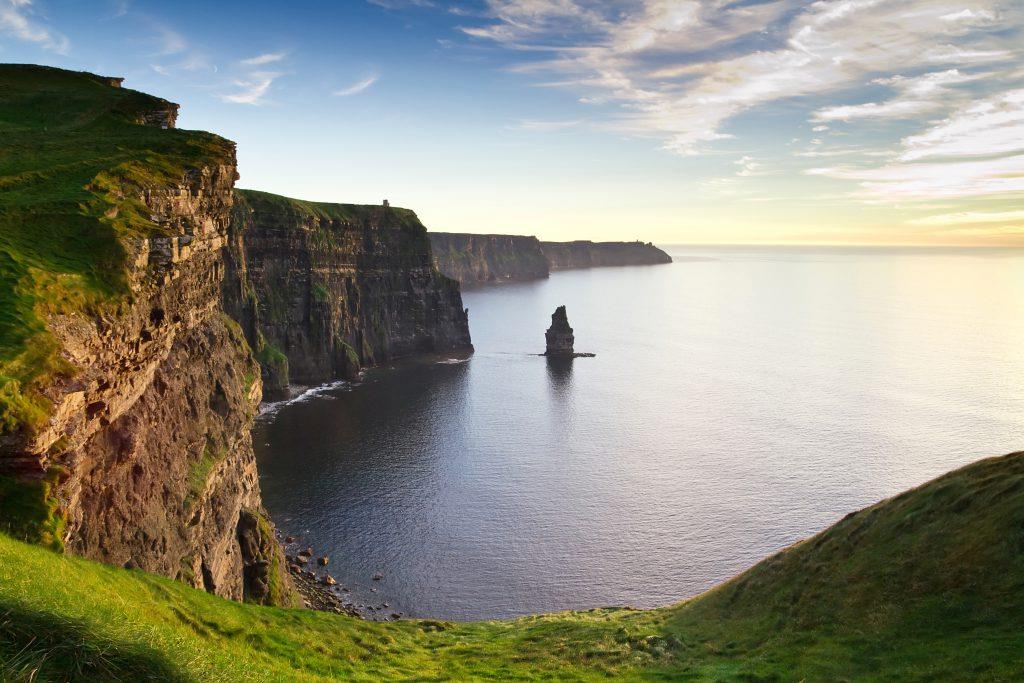 One important thing to note is that the traffic light sequence in Ireland is different to most other European countries. Red obviously means stop, but it then goes immediately to green for go. The amber light only comes on as a warning to stop if possible prior to turning red. Generally main roads are well signposted with respect to locations and speed limits. You will need to keep your eyes peeled though, as some limits can change on certain sections for short stretches. It is in areas like this and in accident blackspots that speed camera vans can often be positioned to catch offending drivers, so be warned! Drivers with foreign driving licences aren’t exempt from the rules of the road and are subject to Ireland’s fine system, even if penalty points cannot be added to foreign licences.
One important thing to note is that the traffic light sequence in Ireland is different to most other European countries. Red obviously means stop, but it then goes immediately to green for go. The amber light only comes on as a warning to stop if possible prior to turning red. Generally main roads are well signposted with respect to locations and speed limits. You will need to keep your eyes peeled though, as some limits can change on certain sections for short stretches. It is in areas like this and in accident blackspots that speed camera vans can often be positioned to catch offending drivers, so be warned! Drivers with foreign driving licences aren’t exempt from the rules of the road and are subject to Ireland’s fine system, even if penalty points cannot be added to foreign licences. 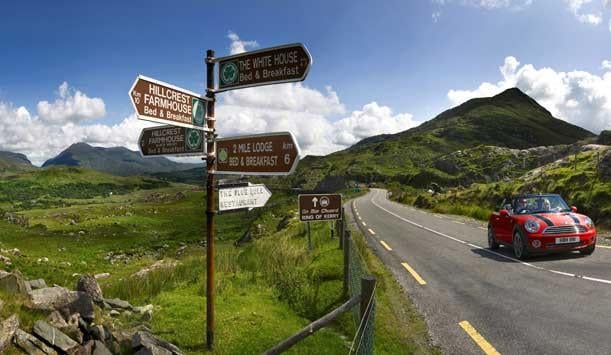 Most of the roads in Ireland come under three categories, but here is a full list of the speed limits: Type of road Speed limit Motorway 120km/h/74mph (though some sections may be just 100km/h - e.g. the M50) National roads 100km/h/62mph Regional roads 80km/h/49mph Urban areas 50km/h/31mph Special limits (schools etc.) 30km/h/18mph Getting around Ireland via the main motorways and national roads is relatively easy and well signposted, but when you stray further afield don’t rely as much on signage,
Most of the roads in Ireland come under three categories, but here is a full list of the speed limits: Type of road Speed limit Motorway 120km/h/74mph (though some sections may be just 100km/h - e.g. the M50) National roads 100km/h/62mph Regional roads 80km/h/49mph Urban areas 50km/h/31mph Special limits (schools etc.) 30km/h/18mph Getting around Ireland via the main motorways and national roads is relatively easy and well signposted, but when you stray further afield don’t rely as much on signage, 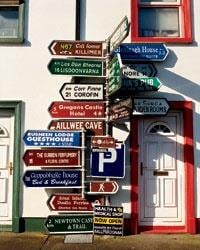 it's kind of a 'feast or famine' situation with signage in Ireland - they can be sometimes few and far between - and there are plenty of mistakes around the country. You can always use either the satnav in your car or phone, but if it is a rural destination you are travelling to it’s best to make sure you have the correct details as there can be several locations in Ireland with the same name, like Main Street or Blackrock, for example. Also, don't rely on mobile phone signal entirely for your navigation, as it's not great once you move away from towns. Although postal codes have recently been introduced they haven’t been adopted by the satnav companies as yet, either. If you are travelling around rural parts of Ireland at certain times of the year you may well come across farm and agricultural traffic on the roads so it is important to keep you speeds down especially coming up to unsighted corners. Mud and tractor tyre tracks on the road are clear giveaways.
it's kind of a 'feast or famine' situation with signage in Ireland - they can be sometimes few and far between - and there are plenty of mistakes around the country. You can always use either the satnav in your car or phone, but if it is a rural destination you are travelling to it’s best to make sure you have the correct details as there can be several locations in Ireland with the same name, like Main Street or Blackrock, for example. Also, don't rely on mobile phone signal entirely for your navigation, as it's not great once you move away from towns. Although postal codes have recently been introduced they haven’t been adopted by the satnav companies as yet, either. If you are travelling around rural parts of Ireland at certain times of the year you may well come across farm and agricultural traffic on the roads so it is important to keep you speeds down especially coming up to unsighted corners. Mud and tractor tyre tracks on the road are clear giveaways. 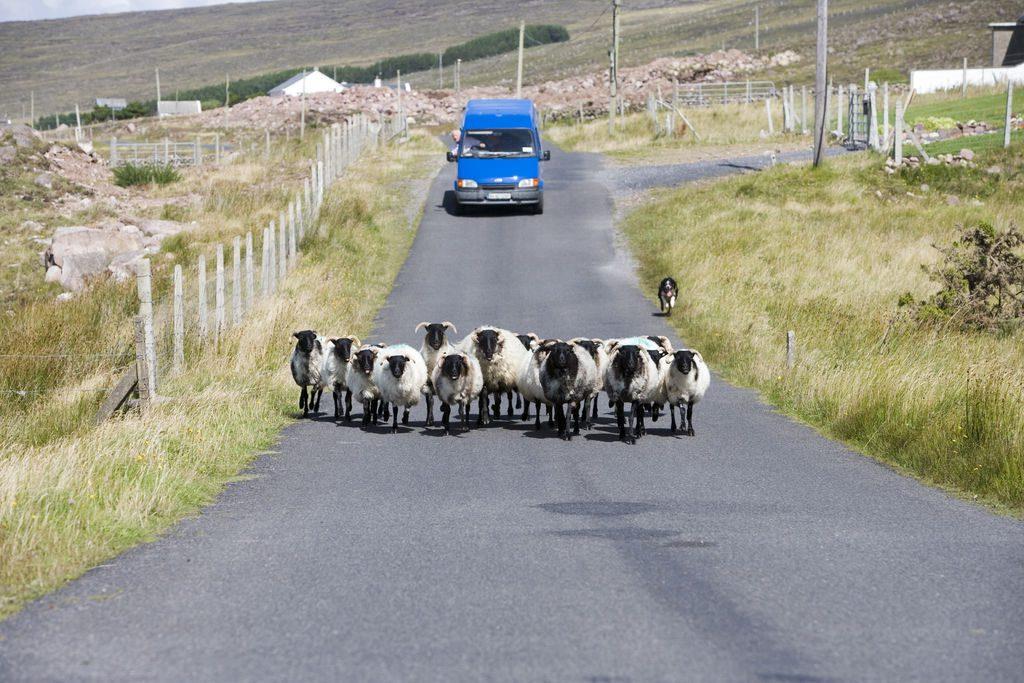 Road Condition: There has been a lot of investment in the country's motorway network over recent years and as such these roads are in excellent condition. The same cannot be said of many of the A and B roads however, many of which will give your car's suspension a real work out! Another thing to bear in mind is rain, Ireland has one of the most beautiful, lush green landscapes in the world and that is because it rains here.....a lot! As such driving conditions can be tricky at times, but take your time, leave plenty of space between you and the car in front and watch out for isolated flash floods and you'll be fine.
Road Condition: There has been a lot of investment in the country's motorway network over recent years and as such these roads are in excellent condition. The same cannot be said of many of the A and B roads however, many of which will give your car's suspension a real work out! Another thing to bear in mind is rain, Ireland has one of the most beautiful, lush green landscapes in the world and that is because it rains here.....a lot! As such driving conditions can be tricky at times, but take your time, leave plenty of space between you and the car in front and watch out for isolated flash floods and you'll be fine. 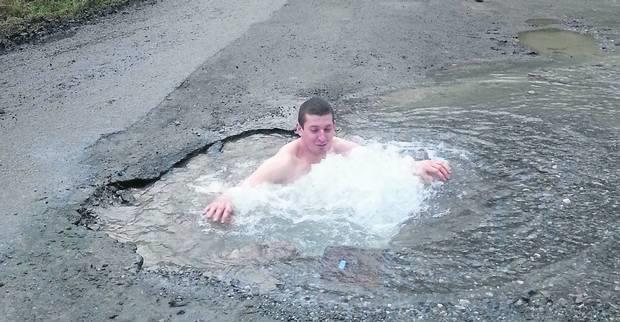 Tolls: Only the main motorways in Ireland are tolled and they're not overly expensive at roughly €3.00 each. Most don't accept payment by card so make sure you have cash or if you're in a rental car it may have an eflow tag. You'll need to sort out the mechanics of paying that with the car rental company, or it may be included. The M50 motorway has the only barrier-free toll that you can drive straight through (you might not even notice you've driven through it) but keep your eyes open for the toll signs because you need to pay this toll by 8pm the following day otherwise you'll start running into fines! The eflow website contains all the details on how to pay.
Tolls: Only the main motorways in Ireland are tolled and they're not overly expensive at roughly €3.00 each. Most don't accept payment by card so make sure you have cash or if you're in a rental car it may have an eflow tag. You'll need to sort out the mechanics of paying that with the car rental company, or it may be included. The M50 motorway has the only barrier-free toll that you can drive straight through (you might not even notice you've driven through it) but keep your eyes open for the toll signs because you need to pay this toll by 8pm the following day otherwise you'll start running into fines! The eflow website contains all the details on how to pay.  Filling up: For its size Ireland has a pretty good coverage of filling stations. In fact, most towns will usually have at least one, but it is worth remembering that some more rural stations may not open as late in the evenings.
Filling up: For its size Ireland has a pretty good coverage of filling stations. In fact, most towns will usually have at least one, but it is worth remembering that some more rural stations may not open as late in the evenings. 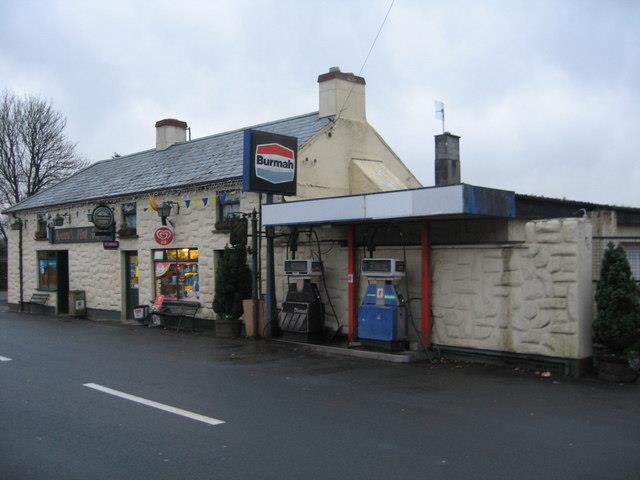 All will carry diesel and unleaded while some of the larger chains of fuel retailers will have electric vehicle charging points. The latter are generally located just off major motorways at large service stations, but these can sometimes only provide charging for one or two cars, so you may have to wait your turn. While it might be easy to fill your car up you need to be very careful when topping up your body’s fluids. Ireland has quite strict laws with regard to drink driving and it is considered a serious offence. The police force, called An Garda Siochána, regularly set up temporary check points to test drivers and you are required if stopped to provide a breath sample via a breathalyser. If you happen to fail this test or cannot provide an adequate sample you will be required to provide a blood sample at the local Garda station. The legal limit for fully licenced drivers is 50 milligrams of alcohol per 100ml of blood. If you are a professional driver it is lower again at 20 milligrams of alcohol per 100ml of blood. Whether you are a local or a tourist you must adhere to these regulations.
All will carry diesel and unleaded while some of the larger chains of fuel retailers will have electric vehicle charging points. The latter are generally located just off major motorways at large service stations, but these can sometimes only provide charging for one or two cars, so you may have to wait your turn. While it might be easy to fill your car up you need to be very careful when topping up your body’s fluids. Ireland has quite strict laws with regard to drink driving and it is considered a serious offence. The police force, called An Garda Siochána, regularly set up temporary check points to test drivers and you are required if stopped to provide a breath sample via a breathalyser. If you happen to fail this test or cannot provide an adequate sample you will be required to provide a blood sample at the local Garda station. The legal limit for fully licenced drivers is 50 milligrams of alcohol per 100ml of blood. If you are a professional driver it is lower again at 20 milligrams of alcohol per 100ml of blood. Whether you are a local or a tourist you must adhere to these regulations. 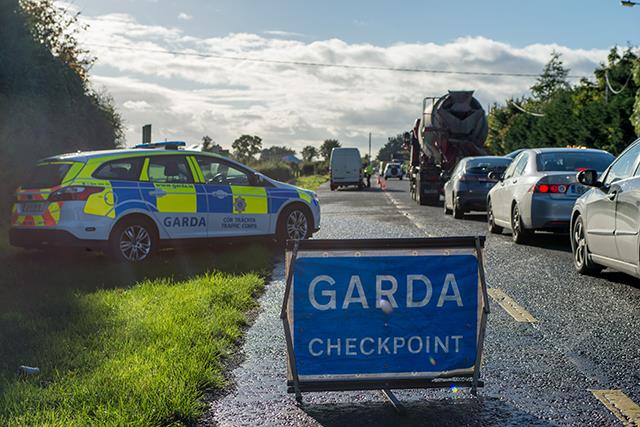 Things to carry: At all times you are required to carry a valid driving licence and your car must display both proof of insurance and a motor tax disc and, if the car is over 4 years old, the National Car Test (NCT) disc must be displayed also. For tourists it is recommended that you carry a copy of your vehicle rental agreement if you have a hire car. Although not a legal requirement it is always a good idea to have a breakdown warning triangle, first aid kit, spare bulb kit, high visibility vest and, if possible, a small fire extinguisher in your car. Many hire cars will have some of these, but if it doesn’t feel free to ask for them as they could come in handy. If you are involved in an accident where somebody has been injured the number for the emergency services is 999 or 112. Smaller traffic collisions can be dealt with without the need for Garda involvement if nobody has been hurt and it is recommended that you record all of the details of cars, people involved and exactly what happened. If you are unsure then contact the local Garda station for advice.
Things to carry: At all times you are required to carry a valid driving licence and your car must display both proof of insurance and a motor tax disc and, if the car is over 4 years old, the National Car Test (NCT) disc must be displayed also. For tourists it is recommended that you carry a copy of your vehicle rental agreement if you have a hire car. Although not a legal requirement it is always a good idea to have a breakdown warning triangle, first aid kit, spare bulb kit, high visibility vest and, if possible, a small fire extinguisher in your car. Many hire cars will have some of these, but if it doesn’t feel free to ask for them as they could come in handy. If you are involved in an accident where somebody has been injured the number for the emergency services is 999 or 112. Smaller traffic collisions can be dealt with without the need for Garda involvement if nobody has been hurt and it is recommended that you record all of the details of cars, people involved and exactly what happened. If you are unsure then contact the local Garda station for advice.